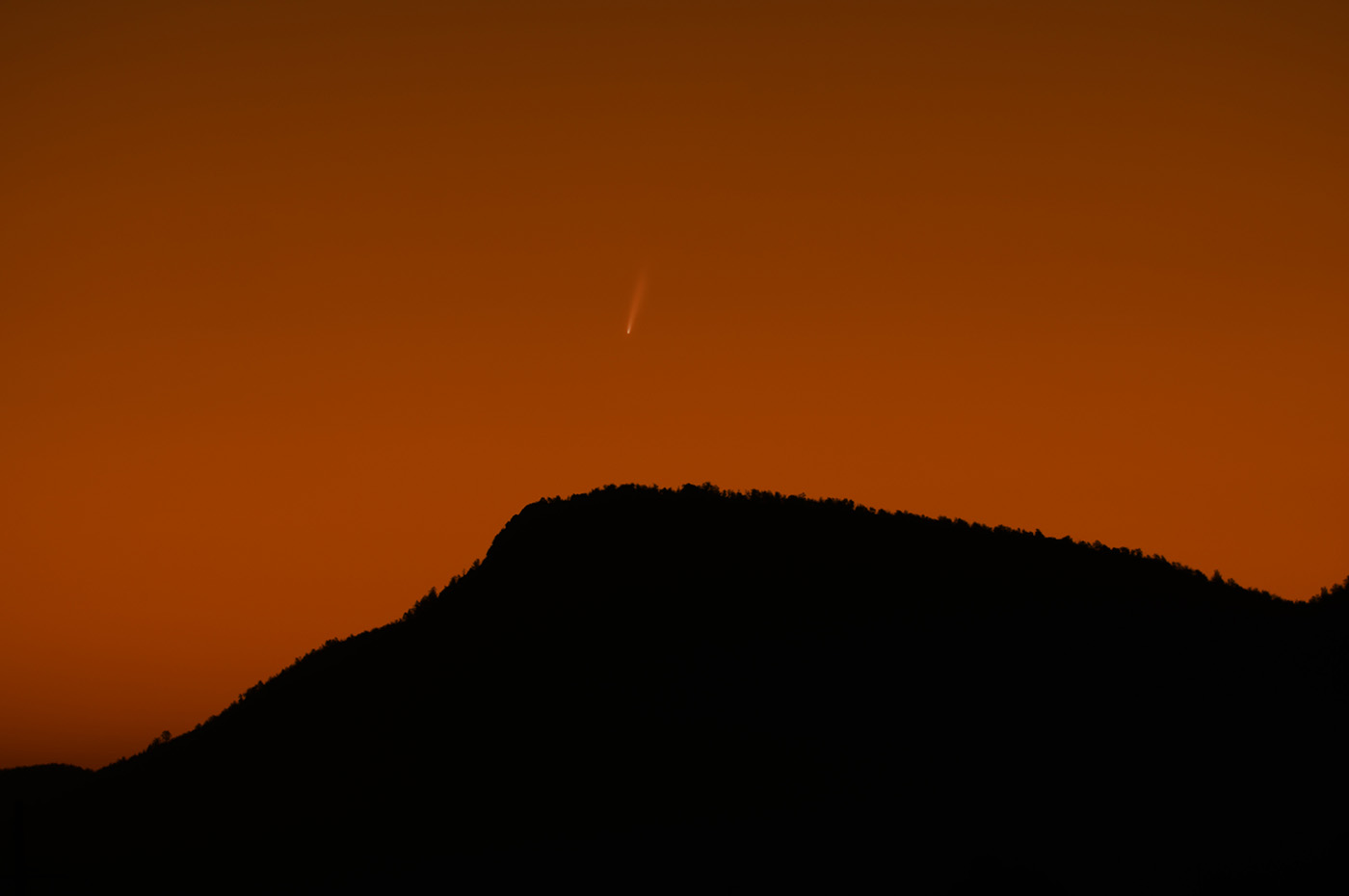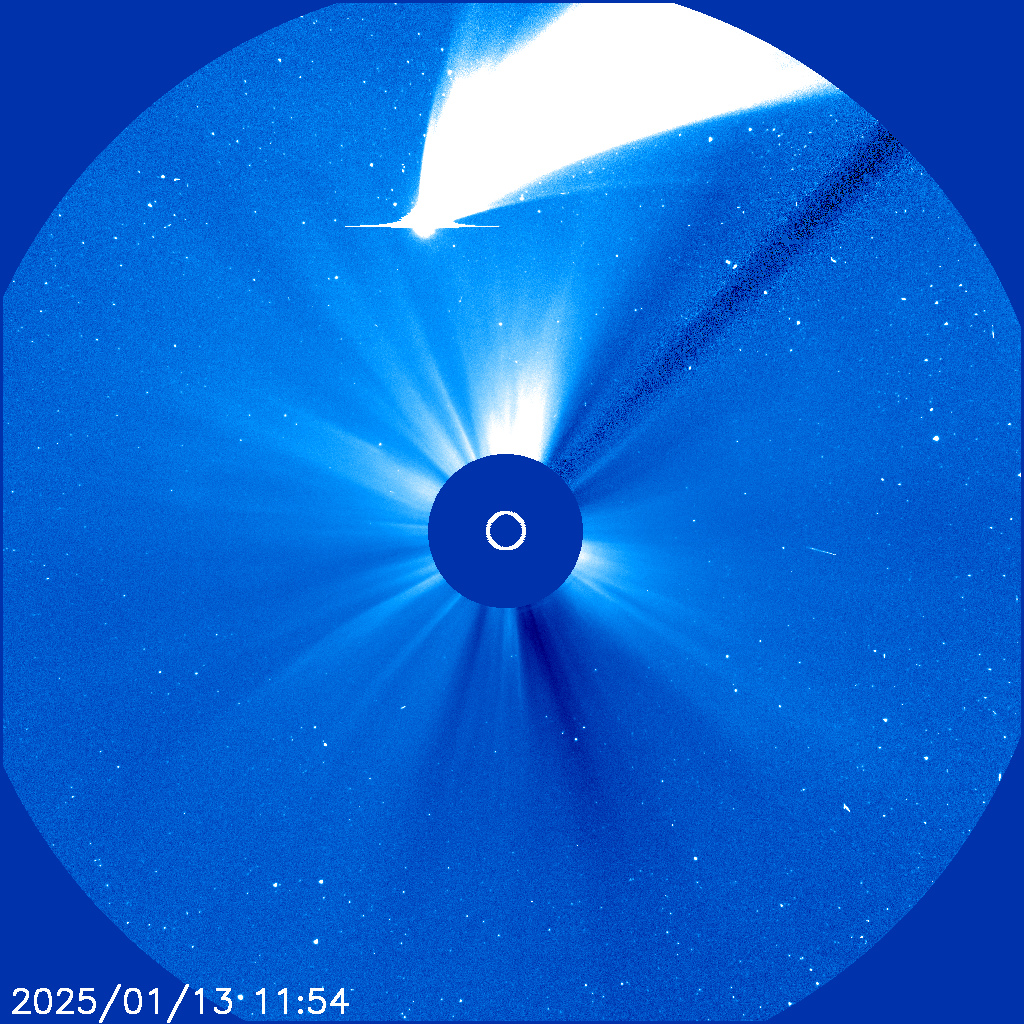The attention of many observers – professionals and amateurs alike – is focused on comet C/2024 G3 (ATLAS), which is passing perihelion today. For the comet is a real “trial by fire”, as it turns out to be 4 times closer to the Sun than Mercury, and the temperature of its nucleus can reach 1000 K. “Will the comet survive or will it disintegrate?” – is the question we’ve been waiting breathlessly for the answer to.

A dance of ice and fire
The comet’s nucleus is a “loose dirty snowball”: solid particles here are mixed with frozen gases and water ice. Approaching the Sun, the comet gradually vaporizes, the solid material leaves the nucleus and is pulled behind it by a long tail.
At perihelion (the closest point of the orbit to the Sun) C/2024 G3 is 0.0935 a.u. from the star, causing the nucleus to heat up to 900-1000 K, therefore most astronomers refer to it as a near-solar comet. The last few days it was extremely difficult to observe this comet, as the “tail guest” was literally a few degrees from the Sun. However, we had the opportunity to follow its fate, because on January 11, the comet appeared in the field of view of the space solar coronagraph SOHO – in the images of the wide-angle instrument LASCO C3. In the center of the frame, the Sun is covered with a special lens to see the area of the solar corona and around it, where the comet dived headfirst.

All or nothing
Breaking news shook up the observing community yesterday (January 12): Japanese astronomer Takaaki Oribe published an image of comet C/2024 G3 (ATLAS), obtained in the daytime sky with the 1.03-meter diameter telescope of the Saji Observatory. And it clearly shows that the comet’s pseudo-nucleus consists of two parts: a brighter one and a less bright one.
In general, nucleus fragmentation was quite expected, as Terry Lovejoy observed a sharp increase in the comet’s brightness on January 2. What could be causing this? As the comet approaches the Sun, the pressure of the gases inside the nucleus increases. And, if the nucleus is fragile, it may split into two or more fragments. Generally, such a sharp increase in brightness is precisely the evidence of core disintegration. Quite often one flash is followed by others. Then we can conclude a fragile nucleus, which for a near-solar comet sharply reduces the chances of survival.

However, none of the images taken before or afterward showed any signs of decay. No additional flares were observed either. Can Takaaki Oribe make a mistake when taking or processing images? More likely no than yes. In addition to the comet, the image shows tracks from barely visible stars – the result of specific photo processing, in which the movement of the comet against the background of the stars is compensated, making not the comet, but the stars look elongated. As there are no anomalies in the tracks, the image of the comet is almost certainly without mistakes.
The other question that arises from these is where did the extra fragment disappear to? There are two options here: either it evaporated pretty quickly, or the rest of the images don’t have enough resolution to see the details in the pseudo-nucleus.
Observing the limit of possibility
Yesterday, January 12, Chris Schur (Arizona) did something that seems completely impossible. With just a 250mm short-focus telescope, he was able to photograph comet C/2024 G3 (ATLAS) in the daytime sky! The image below was taken at 10:44 local time, it is not a single image, but a sum of 250 shots of 0.03 seconds each. The comet was only 5° from the Sun at the time of the photograph. It is worth noting that Chris took certain safety measures. Note that the telescope is equipped with an additional homemade hood (a special “extension” of the tube) to prevent even a small ray of light from hitting the camera.

And Pra Claudio reported that he managed to find the comet in the daytime sky using binoculars with a diameter of 100 mm. He was able to not only observe the head of the comet, but also saw a “hint” of a small tail. Although it is difficult to make a reliable estimate of brightness under these conditions, a brightness of -4m (almost as bright as Venus) looks pretty realistic.
Happy End
So, today at 10:17 UTC, the comet passed perihelion, and, according to SOHO observations, passed its test with honor. C/2024 G3 (ATLAS) is still very bright, although not as bright as predicted by forecasts that it should have reached -6 stellar magnitude. Now the comet will gradually move away from the Sun, while turning tail forward.
Theoretically, the comet can still be caught in our latitudes. On January 14-16, it will have already moved slightly away from the Sun and will set over the horizon shortly after it. To date, we have not found any photographic evidence of sightings from Ukraine. Therefore, you can be the first!



